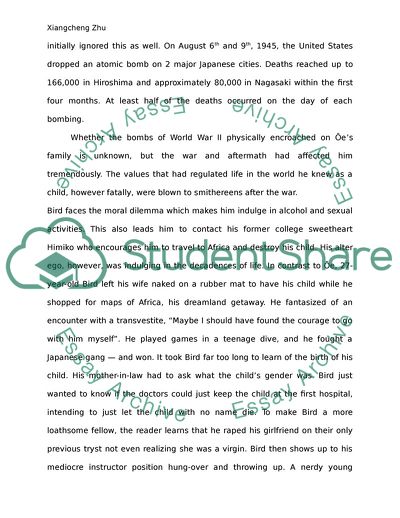Alter Ego With Imagery of Death by e: Semi-Autobiographical Representation Essay Example | Topics and Well Written Essays - 1750 words. https://studentshare.org/literature/1758945-the-sheridan-baker-thesis-machine-and-kenzaburo-oes-a-personal-matter
Alter Ego With Imagery of Death by E: Semi-Autobiographical Representation Essay Example | Topics and Well Written Essays - 1750 Words. https://studentshare.org/literature/1758945-the-sheridan-baker-thesis-machine-and-kenzaburo-oes-a-personal-matter.


